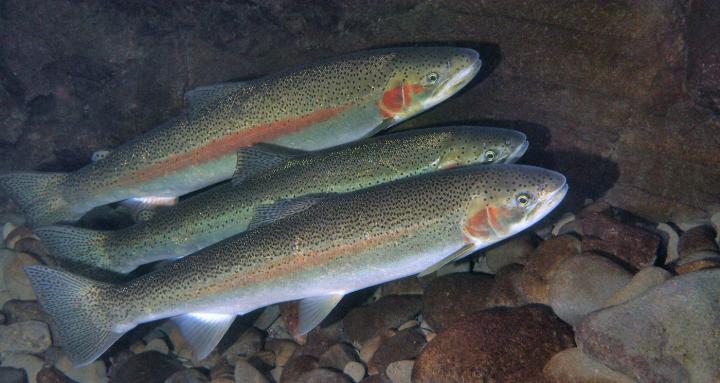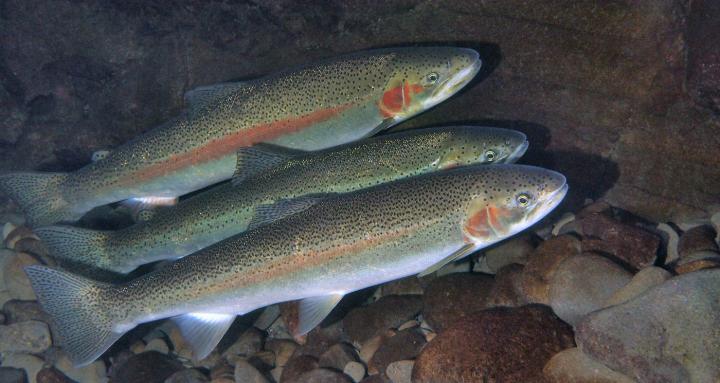
CORVALLIS, Ore. – A new study on steelhead trout in Oregon offers genetic evidence that wild and hatchery fish are different at the DNA level, and that they can become different with surprising speed.
The research, published today in Nature Communications, found that after one generation of hatchery culture, the offspring of wild fish and first-generation hatchery fish differed in the activity of more than 700 genes.
A single generation of adaptation to the hatchery resulted in observable changes at the DNA level that were passed on to offspring, scientists reported.
This research was conducted at Oregon State University in collaboration with the Oregon Department of Fisheries and Wildlife. Scientists say the findings essentially close the case on whether or not wild and hatchery fish can be genetically different.
Differences in survival and reproductive success between hatchery and wild fish have long offered evidence of rapid adaptation to the hatchery environment. This new DNA evidence directly measured the activity of all genes in the offspring of hatchery and wild fish. It conclusively demonstrates that the genetic differences between hatchery and wild fish are large in scale and fully heritable.
"A fish hatchery is a very artificial environment that causes strong natural selection pressures," said Michael Blouin, a professor of integrative biology in the OSU College of Science. "A concrete box with 50,000 other fish all crowded together and fed pellet food is clearly a lot different than an open stream."
It's not clear exactly what traits are being selected for, but the study was able to identify some genetic changes that may explain how the fish are responding to the novel environment in the hatchery.
"We observed that a large number of genes were involved in pathways related to wound healing, immunity, and metabolism, and this is consistent with the idea that the earliest stages of domestication may involve adapting to highly crowded conditions," said Mark Christie, lead author of the study.
Aside from crowding, which is common in the hatchery, injuries also happen more often and disease can be more prevalent.
The genetic changes are substantial and rapid, the study found. It's literally a process of evolution at work, but in this case it does not take multiple generations or long periods of time.
"We expected hatcheries to have a genetic impact," Blouin said. "However, the large amount of change we observed at the DNA level was really amazing. This was a surprising result."
With the question put to rest of whether hatchery fish are different, Blouin said, it may now be possible to determine exactly how they are different, and work to address that problem. When the genetic changes that occur in a hatchery environment are better understood, it could be possible to change the way fish are raised in order to produce hatchery fish that are more like wild fish. This research is a first step in that direction.
###
This work was performed using steelhead trout from the Hood River in Oregon. It was supported by the Bonneville Power Administration and the Oregon Department of Fish and Wildlife.
Media Contact
Michael Blouin
[email protected]
541-737-2362
@oregonstatenews
http://www.orst.edu





